1. history of ballet
2. Ballet terminologies
3. Types of ballet
4. Importance of ballet
5. Studio components and equipments
6. Food and diets
7. Principles of ballet
8. Warm-ups and exercises
Summative questions
HISTORY OF BALLET
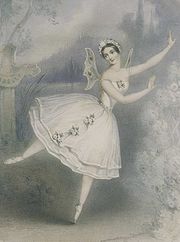
The history of ballet begins around 1500 in Italy. Terms like “ballet” and “ball” stem from the Italian word "ballare," which means "to dance."When Catherine de Medici of Italy married the French King Henry II, she introduced early dance styles into court life in France.At first, the dancers wore masks, layers upon layers of brocaded costuming, pantaloons, large headdresses, and ornaments. Such restrictive clothing was sumptuous to look at but difficult to move in. Dance steps were composed of small hops, slides, curtsies, promenades, and gentle turns. Dancing shoes had small heels and resembled formal dress shoes rather than any contemporary ballet shoe we might recognize today.The official terminology and vocabulary of ballet was gradually codified in French over the next 100 years, and during the reign of Louis XIV, the king himself performed many of the popular dances of the time. Professional dancers were hired to perform at court functions after King Louis and fellow noblemen had stopped dancing.A whole family of instruments evolved during this time as well. The court dances grew in size, opulence, and grandeur to the point where''''''''''''''''''''''''''''''''''''''''''''''' performances were presented on elevated platforms so that a greater audience could watch the increasingly pyrotechnic and elaborate spectacles. Jump ahead 200 years and take a look at the proscenium stage at the War Memorial Opera House
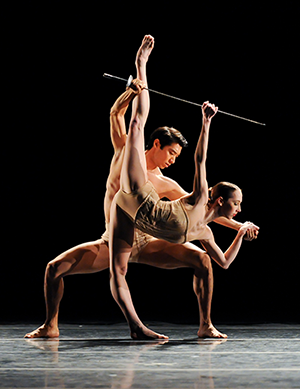
-- the elevation of the stage and dramatic height of the curtained opening will remind visitors of this development first hand.From Italian roots, ballets in France and Russia developed their own stylistic character. By 1850 Russia had become a leading creative center of the dance world, and as ballet continued to evolve, certain new looks and theatrical illusions caught on and became quite fashionable. Dancing en pointe (on toe) became popular during the early part of the nineteenth century, with women often performing in white, bell-like skirts that ended at the calf. Pointe dancing was reserved for women only, and this exclusive taste for female dancers and characters inspired a certain type of recognizable Romantic heroine - a sylph-like fairy whose pristine goodness and purity inevitably triumphs over evil or injustice.In the early twentieth century, the Russian theatre producer Serge Diaghilev brought together some of that country's most talented dancers, choreographers, composers, singers, and designers to form a group called the Ballet Russes. The Ballet Russes toured Europe and America, presenting a wide variety of ballets. Here in America, ballet grew in popularity during the 1930's when several of Diaghilev's dancers left his company to work with and settle in the U.S. Of these, George Balanchine is one of the best known artists who firmly established ballet in America by founding the New York City Ballet. Another key figure was Adolph Bolm, the first director of San Francisco Ballet School.
THE FIVE BASIC POSITIONS
Understanding the basic positions is a great place to start when beginning your practice, since they make up the building blocks of ballet. As noted by the academy:“The five basic positions are usually one of the first things taught in a beginner’s ballet class but are essential to the technique of classical ballet as practically every step begins and ends in one of the five basic positions.”The basic positions concern the placement of the feet and are aptly named: first position, second position, third position, fourth position and fifth position.
(1) FIRST POSITION: The heels are together with the toes of each foot pointed out toward either side, with legs straight and turned out, following the position of the feet.
(2) SECOND POSITION: Legs are straight and the feet are turned out to each side like in first position, but the difference is that the heels do not touch and are instead about hip-width apart.
(3) THIRD POSITION: This position is rarely used, since it can be mistaken for a sloppy first or fifth position, but it is still important to learn. Begin in first position, and then slide the heel of one foot so it lines up with the middle of the other foot, keeping both feet pointing out in opposite directions.
(4) FOURTH POSITION: Stand with one foot about a foot’s length in front of your other foot. Each foot should be pointing in an opposite direction, and the toes of the back foot should line up with the heel of the front foot.
(5) FIFT POSITION: This position is the most difficult one. It’s like fourth position, but there is no gap between--------------------------------------------- your feet. The toes of each foot should be directly in front of the heel of the other foot, and make sure your legs are turned out and straight.
BALLET TERMINOLOGIES
1. Adagio (Ah-dah-ghee-o)
Adagio is a series of fluid and focused exercises that are performed slowly in order to improve dancers’ balance, strength and lines. It also refers to the opening sequence of a two-person dance that includes one partner lifting the other.
2. Allégro (ah-lah-grow)
Allégro means fast, brisk and energetic movements and is associated with jumps.
3. Arabesque (ah-ra-bisk)
An arabesque is when the dancer stands on one leg with the other leg extended behind the body. The arms can be held in a variety of positions. Regardless, the goal of the arabesque is to create as smooth seamless a line as possible with the body, from the shoulders through the arms and down to the toes of the extended leg.
4. barre (bar)
This is the wooden bar attached to the walls of the classroom, though some barres stand on their own. The dancer holds onto the barre for support, and a sequence of barre exercises is part of every ballet class.
5. Battement Tendu (bah-tee-mhun/ ten-duh)
This when the leg and foot are fluidly swept across the floor from one position to another. Typically, a “battement tendu” starts from first or fifth position, the leg is extended in the motion, and then it returns to the starting position. The leg should be straight and fully extended so that the foot only brushes the ground during the movement. Betadance noted that many teachers refer to the move as just “tendu.”
6. Changements (chan-ghe-mhun)
When a dancer begins in fifth position, jumps up in place and then switches the position of their feet while in the air so that they land in fifth position with the opposite foot now in front.
7. En Pointe (un poin)
“En pointe” is when you dance on the very tips of your toes. Pointe shoes, typically made of satin, are used to achieve this. Students begin dancing en pointe only after they have advanced to a higher skill level, Learntodance.com noted. However, on their way to dancing en pointe, students will practice moves and positions in demi-pointe, which is when a dancer stands on the balls of their feet.
8. Pas de Deux (pah-duh-dee)
Pas de deux means “a dance for two people,” and is sometimes shortened to “pas.”
9. Pirouette (pee-ru-et)
A pirouette is a 360 degree spin made on one foot that is en pointe or demi-pointe, and is frequently begun from fourth position. The move requires strong core alignment and balance.<br/><br/>
10. Plié (plee-ay)
Plié means “bent” or “bending,” and is when one or both knees are bent while legs and feet remain turned out, and are done in first, second, fourth and fifth positions. There are two main types of pliés, demi and grand:
(A) DEMI: This is a small bend of the knees while heels are on the floor which creates a diamond shape.
(B) GRAND: A large bend of the knees during which heels are raised off the ground in a motion that mimics a “frog stretch.”“There are two main types of pliés: demi and grand.”
11. Ronde de Jambe (run-duh-jhamb)
Ronde de jambe “round of the leg.” It is when the dancer rests on one leg and makes a circular movement with the other leg. It may be done “à terre,” which means the circle is made while the foot is touching the ground, or “en l’air,” which means the circle is made in the air.
12. Sauté (suh-tay)
Sauté means “jump,” and is frequently used in combination with other moves to signify that they should be done with a jump.
Earlier styles were connected with geographical origin, like French ballet, Italian ballet, and Russian ballet. Later styles combined classical ballet and other dance techniques, like neoclassical ballet and contemporary ballet.
TYPES OF BALLET
In the 19th century, romantic era brought romantic ballet style, the most performed classical ballet style. In the center of attention are ballerinas, female dancers, in classical short white tutus. They often played the role of mystical female that enslaved mortal men's heart. Characteristics of this style are pointe work, precise body movements, and intense emotions. Best known romantic ballets are La Sylphide and Coppélia.
CLASSICAL BALLET
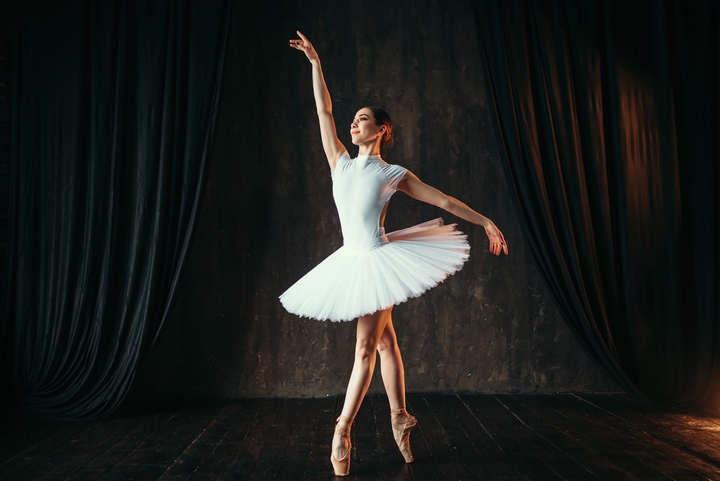
styles , like French, Italian and Russian, is characterized by classical ballet vocabulary and techniques. Classical ballet has training methods which often got their names by their creators, like Cecchetti method, after Italian ballet dancer Enrico Cecchetti. In 1920 in London was created a Royal Academy of Dance method. This English style merged French, Italian, Russian and Danish styles. Best known classical ballets are by Pyotr Ilyich Tchaikovsky, like The Nutcracker and Swan Lake.
NEOCLASSICAL BALLET
opposite to classical ballet has abstract elements, as no strict scenery, plot and costumes and minimal set design. It eliminates the formalities and opens up to modern techniques and ideas. Modern ballet style emerged from neoclassical ballet style. Opposed to delicate moves greater athleticism was favored.
ROMANTIC BALLET
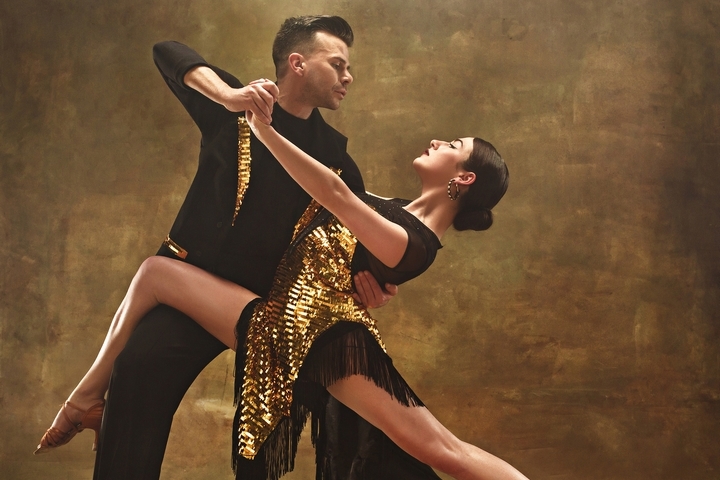
This is a classical type of ballet modified by artistic movements. It became popular in the 19th century. Many of the moves are like those of the classical style, but there are artistic and performance differences that make romantic ballet style unique. One of these is the pointe work, an impressive technique in which the dancers support themselves on their toes.In this type of ballet, the main focus is on the women dancers. Their preferred wear is the classical short white tutus. ‘La Sylphide’ and ‘Coppelia’ are some of the romantic ballet styles that display intense emotions. The women dancers’ moves are like those of sylphs and ghosts. They have ensnaring effects on the hearts of men.
CONTEMPORARY BALLET
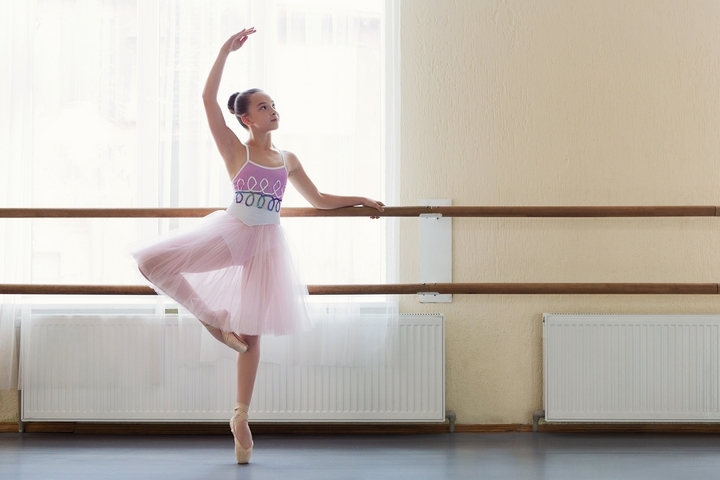
utilized ballet techniques, like classical ballet and elements from modern, ethnic and jazz styles and allows experimentations with ballet and modern dance. There is a fine line between----------------------------------------- contemporary ballet and contemporary dance, and also between-----------------------contemporary ballet and neoclassical and modern ballet. Dancers moves are bigger, faster, and so it is characterized by robust athleticism, floor work, turn-in of the legs, dancing barefoot, acting and mime.
METHOD OF BALLET
Methods represent formalized and standardized classical ballet training systems, often founded by one creator or a ballet group.
ITALIAN BALLET style has Cecchetti method named by ballet dancer Enrico Cecchetti.
RUSSIAN BALLET style has Vaganova method named by dancer Agrippina Vaganova and Legat method named by Nikolai Legat.
ENGLISH BALLET style has Royal Academy of Dance training system that was created by the group of professional ballet dancers.
FRENCH AND AMERICAN BALLET style are not standardized as training system or method by one creator. French ballet style has training system from groups like Paris Opera Ballet School.
IMPORTANCE OF BALLET
(1) FIRSTLY, and possibly most importantly, ballet is the foundation for all styles of dance! It may seem unbelievable that learning ballet can be useful to a hip hop or tap dancer, but the skill and technique acquired during ballet class is actually really, really helpful for all styles of dance! Ballet focuses so strongly on technique and the basics of dance movement that is incredibly helpful when dancers begin to learn other dance styles. Believe it or not, basic ballet movements such as plies and tendus, are constantly used throughout all styles of dance, and can often be found in contemporary and jazz performances. Technique is mastered in ballet class, and this translates through to all dance styles. The best, most professional dancers, no matter what style they excel in, most often have a strong ballet background. Even those insanely talented hip hop dancers are ballet trained!
(2). SECONDLY, ballet helps to build a strong dance vocabulary! The technical terms learnt in ballet will often be used in other dance styles, and sometimes even during everyday life! Ballet is also the perfect way to brush up on your French!
(3). THIRDLY, ballet is essential in building a dancers strength and improving their flexibility. Ballet definitely isn’t easy, and often pushes the body to its limits, therefore improving muscle strength and flexibility! This gained flexibility and strength is important during dance class, both for safety and performance quality. It is very important that dancers have enough strength to perform difficult dance movement, in order to avoid injury, and ballet is perfect for this purpose! In terms of flexibility, dancers are able to improve the quality of their performance by improving flexibility. Who doesn’t want to be able to kick their leg above their head?! Both strength and flexibility are both incredibly important aspects of dance, and ballet is essential in improving these skills.
(4). FOURTHLY, ballet helps to build a dancers confidence. In ballet, dancers are constantly improving, and this constant improvement often leads to an increase in confidence! Not only does ballet help to increase a dancer’s confidence when in class, but also when performing on stage, as they are equipped with the proper technique needed to ------------------------------------------------------------------------------execute movement correctly, and gracefully!
(5). LASTLY, just like all styles of dance, ballet is great for your health! Constant exercise is great for everyone, and is super important for young children who want to grow up nice and strong! Ballet can be performed by people of all ages, and is great for both physical and mental health. Exercise is so good for you!So there you have it, five reasons why ballet is important! Hopefully this gave you more of an idea of why ballet is such a great tool in helping all dancers improve. And I forgot to mention, ballet is so much fun!
STUDIO COMPONENTS AND EQUIPMENTS
(1) THE BARRE

The most essential piece of dance studio equipment is a barre. Coming in a close second is the mirror, but the barre is crucial. Here you see that young dancers will use the lower bar to place their hands on, and adult dancers will use the upper bar, but there are also different exercises and stretches for which adult dancers will sometimes use the upper and sometimes the lower bar.
(2) THE MIRROR

A mirror is also essential dance studio equipment because without it, the dancer cannot perfect their own technique. A dancer who can see their own angles in the mirror can better understand the teacher's corrections and is able to see the recurring 'problems' in their form and correct them, to a certain extent, without constant reminding from the teacher.

(3) A FAMOUS SONG FROM THE MUSICAL '
A Chorus Line' repeatedly has the dancer sing 'All I ever needed, was the music, and the mirror....and the chance to dance, for you!'. Indeed, as the mirror is crucial, no dance studio is complete without music, either in the form of a piano in-house or a good sound system, preferably both. A piano is important to get dancers accustomed to dancing to live music, which is how the majority of ballet is performed. other components includes (FLOOR, etc)
BALLET ACCESSORIES
No matter what level of experience you have, you will need the right shoes, clothes, and equipment to improve as a ballet dancer. Ballet has a long history that has made certain types of items essential. Various types of ballet shoes, for instance, have been a staple of dancing for over 400 years. If you do not have quality shoes, then you will not be able to keep up with your studies or master new moves. More recently developed items can also help you improve your skills as a ballet dancer. In addition to finding the right ballet outfits and slippers, you should look for equipment that will help you train. That way, you will have mastery over the skills you need when performing in front of other people.Before you invest in any ballet shoes, clothes, and training equipment, take some time to learn about your options so you can choose the ones that are perfect for you.
✔️POINT SHOE
Types of Ballet Shoes You May NeedThere are four basic types of ballet slippers that you should learn about before making a purchase:
✓Soft ballet shoes
✓Ballet pointe shoes
✓Full sole ballet shoes
✓Split sole ballet shoes

Soft ballet shoes are primarily used by beginners who don’t have to perform a lot of technical moves. The shoes are usually made of a soft material that makes them easy to slip on and off. Even if you have been dancing for years, you might want a pair of these ballet flats at your dance studio or home gym since they are great to wear while you are warming up for more advanced moves.
Soft Ballet Shoes For BeginnersBallet pointe shoes are one of the most common types of slippers worn by ballet dancers. They look very much like soft ballet shoes, except that they have a hard toe that lets dancers balance. It still takes a lot of strength to perform moves on your tiptoes, but having the right ballet pointe shoe can take a lot of pressure off of your feet and toes, making it possible for you to perform advanced moves.
Ballet Pointe Shoes For Advanced Moves Full sole ballet shoes are great for beginners who haven’t built up enough foot strength to support themselves over long dances. The full sole shoe has a suede bottom that covers the entire area. This makes it easier for dancers to perform a variety of moves without wearing out their muscles or slipping.
Full Sole Ballet Shoes For Beginners After dancers gain more experience, they usually graduate to using split sole ballet shoes. These shoes only have suede on the heels and toes. This makes it possible for the dancer to arch his or her foot without restriction. While it takes time to get used to a split sole slipper, wearing them can take your dancing to new heights that just aren’t possible with full sole ballet shoes.
Split Sole Ballet Shoes For Advanced Moves Buying Ballet Shoes There are several things that you should look for when buying ballet shoes. You already know what the different types are, so you should look for an option that is right for your experience level. Outside of that, you should know what types of materials and sizes will make you a better dancer.You will find that some of the ballet slippers are made of canvas. These are usually affordable options that you can easily replace. Unfortunately, they do not last very long. Serious dancers can wear out a pair of canvas shoes in a week or less. The more time you spend on your feet, the faster canvas shoes will wear out.Leather shoes cost more to buy, but they last much longer. If you plan to spend more than a few hours each week practicing, then you might as well invest in some leather shoes. That way, you won’t have to worry that your ballet slippers get destroyed in the middle of a workout.Most performance ballet shoes are made of satin. If you plan to perform in front of people, then you will probably need satin ballet shoes. Satin doesn’t hold up well under stress, but that doesn’t matter much since you will not have to wear them very often.
The Best Ballet Shoes Most dancers have one or two pair of satin shoes that they only wear when necessary. On most days, they wear canvas or leather, depending on which they prefer and how much money they can spend.When buying ballet shoes, it is crucial that you get your size right. If you haven’t purchased shoes before, then you should go to a specialty shop to get sized properly. Your ballet studio or instructor will know a place where''''''''''''''''''''''''''''''''''''' you can get fitted.Shoes that don’t fit perfectly will harm your performance. They can also create safety hazards, especially if you are struggling to stay on your toes. As your foot’s muscles get tired, an oversized shoe will start to slip more often. It doesn’t take long before you end up on the floor.Having a shoe that’s too tight will also cause problems. Few things will cause soreness faster than a ballet slipper that fits too snugly. You have to get the size just right to make sure you progress without hurting yourself.
Ballet Clothes and Costumes Traditional ballet outfits have simple designs. Modern outfits, however, are often more ornate. The type of ballet clothes that you wear, therefore, usually depends on what type of performance you will dance in. Around the training studio, it is common to wear any comfortable clothes, including sweatpants and t-shirts. Before you step onto the stage, though, you will need the right ballet outfits to make you presentable and fit in with the rest of the ensemble. Some common ballet dance wear that you should have in your collection include:

Ballet Tutus and Skirts Most of today’s tutus include ballet skirts that either hang loosely to the dancer’s side or stick out stiffly to form a circle around her. In some cases, a bodice is attached to the tutu, but this varies from design to design. There are some tutus that have long, flowing skirts that may fall to the ankle. You might think of it as a ballet dress instead of a tutu. A classical tutu, however, has a short, stiff design that reveals the dancer’s legs.Of course, these are ballet clothes for girls. Ballet uniforms for men are usually just tights that give the dancer free range of motion. They don’t offer much in the way of design.When it comes to a ballet costume, all bets are off. Practically any type of design that you can think of is available. Some ballet costumes are basically just tutus made from brightly colored fabrics. Traditionally, tutus are white, although you can find black ones used by some troops.Some ballets require ornately designed costumes that some people find difficult to dance in. This is part of the challenge of dancing ballet. You not only need to perform well in tights, but complicated costumes when the ballet calls for them. For instance, someone playing the role of a queen might need to wear a dress and hat to look right for the character.While this is somewhat less comfortable than wearing a typical ballet uniform, a good designer will make the costumes so that they fit snugly and make it possible for dancers to move freely. For this reason, even the most complicated costumes are usually made of very lightweight fabrics. They look realistic enough on stage, but off stage you would not recognize them as clothes fit for a queen.
FOOD AND DIET
The ballerina diet is a somewhat mysterious thing. It is hard to imagine how they keep that flawless physique while maintaining enough energy to do their intricate dance routines. Well, it isn't very easy. Ahead, we've got a brief guide on the surprisingly complicated world of eating as a ballerina.
What Ballerinas Eat
A ballerina diet focuses on low-calorie and protein-rich food. After all, they need to keep their perfect figure while also having enough energy to dance. As a result, they eat very specific foods, including eggs, chicken, green beans, potatoes, blueberries, fish, and other types of foods that have a lot of protein.
The idea behind this diet is to give them an incredible burst of energy for their routines without weighing them down. A typical ballerina's breakfast will contain just enough calories to get her through her morning routine. Lunch might be a little bigger, while supper and any snacks are typically small to keep her from having trouble sleeping.
What They Don't Eat
One thing you won't see many ballerinas eat is carbohydrates. While they occasionally eat bread, a ballerina diet is focused on protein. Simple carbohydrates, as in cookies and white bread, are avoided. These foods create a sugar spike and crash that a high-energy ballerina just can't afford to have.
Complex carbohydrates are a little more accepted because they provide dancers with a healthy dose of fiber. However, eating too many carbs is likely to make a ballerina feel bloated and weighed down. As a result, the ballerina diet typically includes little room even for healthy carbohydrates.
A Typical Ballerina Daily DietA good ballerina typically starts her day with at least two eggs, some Greek yogurt, berries, and a little granola. The combination of foods here is strong. The eggs provide her with long-lasting energy that will propel her through her challenging day. The berries give her a slight sugar boost that won't crash and burn. Meanwhile, the granola provides a healthy source of fiber that improves her metabolism and increases her energy on such a difficult ballerina diet. Snacks between---------------------------------- breakfast and lunch are likely to consist mostly of water and vegetables. A typical ballerina usually keeps it light to avoid feeling bloated or cramped.
After taking a lunch break, they are likely to have some form of salad with some grilled chicken or fish. The veggies increase her vitamin intake and support healthier bones and muscles. Meanwhile, the protein maintains her energy level and keeps her going. Supper is likely to be light to avoid feeling too stuffed before going to bed. Another form of protein, such as fish, black beans or tofu, is likely to be served. Drinks focus on water and healthy caffeine, such as black coffee and tea.

TYPICAL BALLERINA SETUP
✓BREAKFAST
coffee 1/2
grapefruit
2 boiled eggs
sautéed spinach in olive oil
✓LUNCH
greens
chicken breast
sweet potato
olive oil vinaigrette
green tea
✓DINNER
baked salmon with grainy mustard and steamed and buttered broccoli
sliced tomato
water
✓SNACKS
1C blueberries with dry roasted almonds
Lindt 90% dark chocolate
water throughout the day
WARM-UP'S AND EXERCISES
what is exercise
exercise can be explained or defines as a physical activity which requires effort and energy. Some exercise are very difficult to practice so therefore it takes time, effort and energy to do them.
why do we do exercise
you may have come to the point of asking this question, why do we do exercise, or of what importance is it? Well, since exercise requires strength, effort and time which means we would be sweating out alot therefore burning some fat and calories, which in turn helps us to remain fit and healthy, in other words exercise helps us to accomplish the following:
✓ stay fit.
✓stay healthy.
✓stay smart.
✓stay strong.
common ballet exercise
In ballet, there are two different types of exercises known as stretching and warming up, stretches are performed at the bar while warm-uls are done in the center, warm-ups and stretches are considered separate activities. Always stretch before doing warm-up exercises.
(1) Barre hamstring stretches: use the barre to stretch out your hamstrings and other leg muscles. Stand at arm’s length from the barre and lift your right leg up to meet the barre. Rest your foot over the barre and hinge your upper body forward to lean into your leg. Then, switch and stretch your left leg.
(2) Tendus:
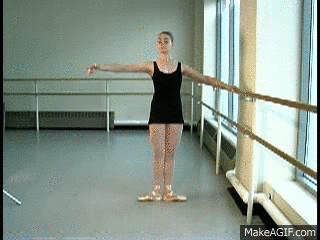
The term tendu is French for “stretched,” and it is a fundamental move in ballet. However, you can also do tendus during your stretch regimen. Begin in a standing position and extend your working leg (the leg you’ll be stretching rather than standing on), lift the heel away from the floor, and point your toes to the ground. You can do this with your leg pointing forward, sideways, or backward.
(3) Lunges: Standard lunges stretch your hips, hamstrings, glutes, and inner thighs. Stand with your back straight and your legs hip-width apart. Step forward with one leg, keeping the foot flat and the knee at 90 degrees. Lower the back knee, allowing it to hover above the floor.
(4) Standing quad stretch: Stand with one leg planted firmly on the ground. Lift your other leg up behind you, bending at the knee, and grab the ankle with your corresponding hand, guiding your foot in toward your body. You should feel this stretch in your quadriceps and hip flexors.
(5) Kneeling quad stretch: Begin this stretch in a lunge position, with your front leg bent at 90 degrees. Rest your back knee on the ground, then grab your back foot with the corresponding hand. Pull your foot in toward your glute, and hold for a deeper stretch.
(6) Front split: Front splits stretch the hip flexors, groin, glutes, and hamstrings. Start with a half-split: Extend your body into a low lunge position, then rest your back knee on the ground and straighten your front leg. Sink deeper into this stretch until you’re able to straighten the back leg and do a full split.
PRINCIPLES OF BALLET
principles can be explained or defined as rules, so these are set rule or guidance that makes-up a good ballet and they can also be regarded or known as elements or flavours.
Elements of Ballet
✓Foot Positions
✓Arm Positions
✓Movements
✓The Company
main purpose of ballet
Ballet is a means of expressing a theme or, as in most cases, telling a story through the medium of dance. As such, ballet as a genre may generally be broken down into the following four basic elements:
✓Choreography - this is the dance element of the ballet. More specifically, the term refers to the design of the dance, ie. the particular movements which are ----------------------------------------------------------------------executed by the performer(s).
✓Music - this is the melodic accompaninent to the dance.
✓Plot - this is the story being enacted within the ballet.
✓Decoration - this is combination of visual elements, ie. scenery, props and costumes, which are added to enhance the telling of the story.
There are certain set positions in ballet for the arms and particularly for the feet which give the dancer a particularly pleasing aspect as well as providing a starting point for particular moves and interchanges. Described here are just a few of the more basic principles.
Foot Positions There are five basic foot positions in ballet, which are common to all teaching methods. Note that all of these are based on the 'turn-out', ie. with the feet pointing in opposing directions either in a straight line, or offset with one foot in front of the other.
✓FIRST POSITION: Feet together, in line, heel to heel.
✓SECOND POSITION: Feet apart, in line, heels opposed.
✓THIRD POSITION: Feet together, front and behind, overlapping by about a half foot length.
✓FOURTH POSITION: Feet apart, front and behind. Feet may be a) closed - fully overlapping, or b) open - no overlap.
✓FIFTH POSITION: Feet together, front and behind, fully overlapping.
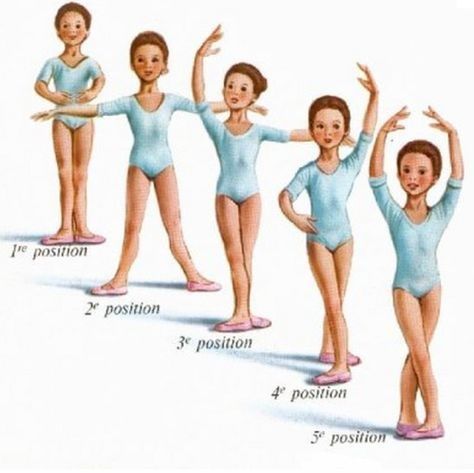
Please note that for clarity of illustration the above presentation describe s a small seperation of the feet in the 'feet together' positions, where'''''''''''''''''''''''''''''''''''as in fact the feet would normally be touching in these positions.En PointeThe most striking and beautiful parts of any ballerina's routine are when she rises en pointe, balancing on the very tips of her toes whilst she pirouettes or takes small steps across the stage, or simply holds a pose balanced on one or both feet. Rising en pointe gives the ballerina a majestic, ethereal quality, appearing so light that she is floating up from the ground. Of course to do this she needs help, the toe joints are simply not strong enough to support the whole body unaided. Pointe shoes are a special type of shoe worn by ballet dancers to enable them to dance en pointe, and have two vital structural features to provide the support the dancer needs to do this. The box is a stiffened enclosure for the dancers toes to keep them straight, prevent the joints from buckling, and distribute the weight more evenly. Traditionally, the box was composed of layers of stiffened material made rigid by stitching and glue. This would quickly soften with use however, and dancers were forced to replace their shoes with extreme frequency. Modern pointe shoes employ a highly advanced plastic material for the box and consequently last much longer. Dancers also use soft wool or modern gel materials to protect their toes from chafing in the box. The box normally has a flattened end to further assist the dancer to hold a balance.The shank is a length of strengthened material which runs along the length of the sole of the shoe. It's purpose is to lend support to the arch of the dancers foot when she rises en pointe.Even with these special shoes, dancing en pointe requires considerable training to build up the necessary strength, and places considerable stress on the feet often resulting in minor injuries such as bunion-----------------------------------s and/or blisters. These are the tribulations that any ballerina must endure for her art.
Arm Positions
Unlike the foot positions, the positions of the arms are not standard with different teaching methods each having their own numbered set of arm positions. The following illustrate the basic set of arm positions commonly taught in ballet. Note that the arms are never held straight but are always gently curved. Furthermore, it is the positions of the arms and legs in combination that give the overall character to the pose. Note also that the tilt of the head and the facial expression can be used to enhance or radically alter----------------------------------- the character of the position
✓PREPERATORY POSITION: Arms lowered, hands a little in front of the thighs (bras bas - "arms low"). This is the ballet dancer's equivalent of 'stand at ease'.
✓FIRST POSITION: Arms forward (held curved and apart as though embracing a large object. This position is known as the gateway position since it is the mid point of transition between----------------------------------- other positions.
✓SECOND POSITION: Arms held out to the side, curving slightly forward.
✓THIRD POSITION: Arms held aloft (en couronne - "like a crown"). Combination: One arm extended to the side, other held curved in front.
✓COMBINATION: One arm raised overhead, other held curved in front - note change in character from head straight to head tilted. The numbering used above is based upon the Russian teaching method.MovementsBallet can be analysed into seven basic categories of movements (the invention of this classification has been variously attributed to at least two 18th Century dance masters, Noverre and Feuillet). These categories are:
Categories of Movement
plièr - to bend
etendre - to stretch
relever - to rise up
sauter - to jump/leap
elancer - to dart
glisser - to glide
tourner - to turn
In a pas de deux (duet) you can add at least four more:
to lift
to throw (jeter)
to catch
to carry
Directions of Facing
The facing of the dancer on stage is summarised according to eight basic compass points.
✓devant/en face - (forwards) directly facing the audience.
✓ouverte devant - (open forwards) facing the right front corner of the stage so that when in fifth position from the audience vantage point a gap is seen between----------------------------------- the legs.
✓de cote to right - (sideways right) facing to the right wing of the stage.
✓ouverte derrière - (open rearwards) facing the rear right corner of the stage.
✓derrière - (backwards) facing directly away from the audience.
✓croisèe derrière - (crossed rearwards) facing the rear left corner of the stage.
✓de cote to left - (sideways left) facing to the left wing of the stage.
✓croisèe devant - (crossed forwards) facing the left front corner of the stage so that when in fifth position from the audience vantage point the legs are seen one behind the other.
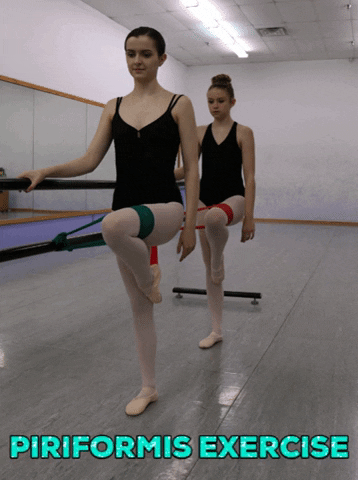
Directions of Movement
The movements of the dancer on stage are similarly summarised as follows:
✓en evant - any forwards movement.
✓ouverte en devant - any movement towards ouverte devant (front right).
✓de cote to right - any movement towards the right.
✓ouverte en arrière - any movement towards ouverte derrière (rear right).en arrière - any backwards movement.
✓croisèe en arrière - any movement towards croisèe derrière (rear left).
✓de cote to left - any movement towards the left.
✓croisèe en avant - any movement towards ouverte croisèe (front left).
✓en dedans - any movement of a limb inwards towards the body.
✓en dehors - any movement of a limb outwards away from the body.
SUMMATIVE TEST
(1) plie means?
(1b) there are _types of plie?
(2) what are the components of a practical ballet studio?
(2b) there are___types of foot positions?